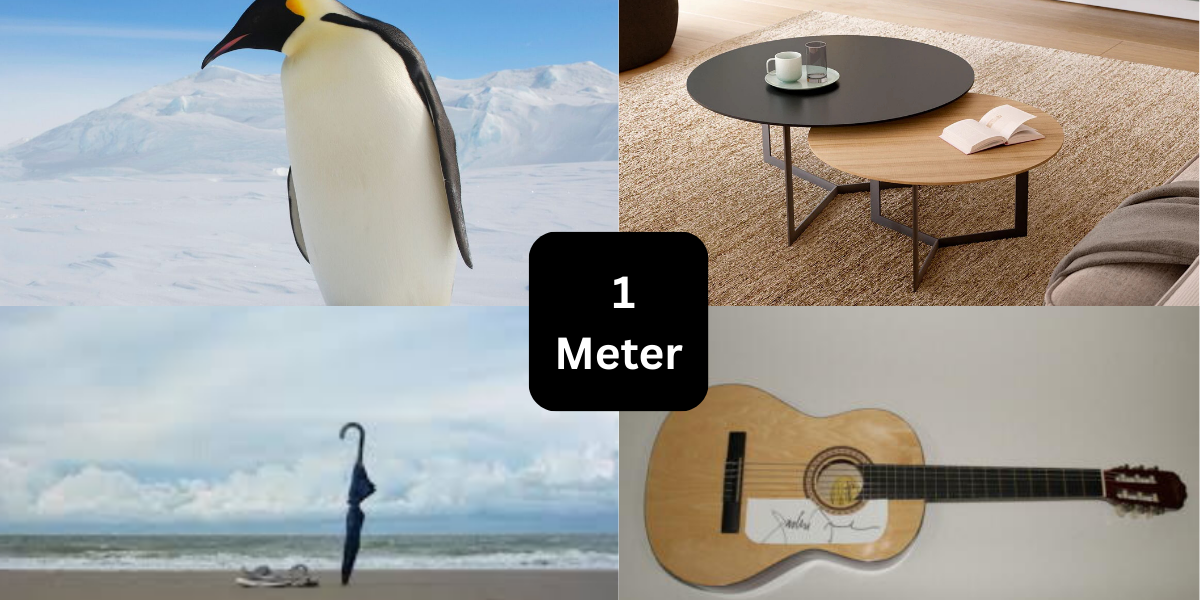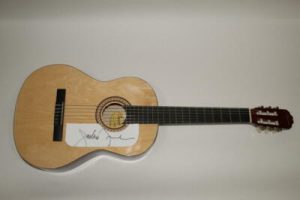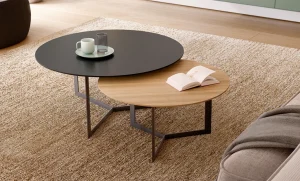One metre (1 m) is a small but very useful unit of length. It shows up in everyday life — in furniture, tools, children, and animals — yet many people struggle to picture it without a tape measure. This guide lists 11 things that are about 1 meter long, explains exact conversions, gives useful ranges, and offers practical tips so you can instantly visualize this common measurement.
Read on to:
- See familiar, real-world items close to 1 m;
- Learn simple tricks to estimate 1 m without a ruler;
- Get design and buying tips (furniture, gear) that depend on knowing what 1 m looks like.
Key facts: what is 1 meter?
- Definition (short): 1 metre = 100 centimetres = 1,000 millimetres.
- In imperial units: 1 m ≈ 3.28084 feet ≈ 39.3701 inches (≈ 3 ft 3.37 in).
Why it matters: the metre is the SI base unit for length and appears in building dimensions, product specs, clothing and mattress sizes, and many consumer measurements. For the authoritative definition of the metre, see the International Bureau of Weights and Measures (BIPM) or national standards agencies such as NIST.
-
How accurate is “about” 1 m? In this article we treat “about 1 m” as roughly within ±10% (90–110 cm). Where practical, exact standard sizes (for mattresses, musical instruments etc.) are noted.
11 Things That Are About 1 Meter (m) Long
Below are 11 everyday objects and natural examples you can use to picture a metre. Each item includes typical measurements and quick context.
1. A metre ruler / metrestick
A metrestick is the simplest reference: a measuring stick marked at 1.00 m exactly. If you own one, you already have a perfect visual. Schools and workshops commonly carry these.
Quick tip: Carrying a 1 m folding rule or tape makes on-the-spot estimating easy.
2. A full-size acoustic guitar
Most full-size dreadnought and folk acoustic guitars measure close to 1.0–1.05 m from headstock to endpin. That makes a guitar a great visual cue: when you hold a guitar vertically, its length is roughly a metre.
Use: If you’re sizing an instrument case or planning storage, remember that a typical acoustic guitar is about 1 m long.
3. A US twin / single mattress width
A U.S. twin mattress measures 39 inches (≈ 99.06 cm) across. In many metric contexts that rounds to about 1 metre in width.
Design note: If a room is 2.2 m wide, two twin beds (each ≈ 1 m) will need about 2 m plus clearance — helpful when planning bedrooms.
4. A small round dining table (diameter)
Compact dining tables for two to four people commonly have diameters around 1 metre. A 1 m round table seats 2–4 comfortably and is a convenient kitchen choice for smaller spaces.
Buying tip: If you want a table that fits in a 2.5 m wide breakfast nook, a 1 m diameter table leaves room for chairs and circulation.
5. A coffee table length
Standard coffee tables are often around 1 m long (some smaller, some longer). This is one of the common furniture lengths used to visualize a metre.
Styling idea: Place a 1 m coffee table centered in front of a 2–2.5 m sofa for balanced proportions.
6. A longboard (skateboard)
Longboards used for cruising and downhill often measure close to 1 metre. That makes them easy to carry and gives a clear picture of 1 m when held beside you.
Practical use: If you’re packing a longboard in a car, anticipate roughly 1 m of length.
7. A closed walking umbrella
Full-length walking umbrellas and golf umbrellas typically close to around 90–105 cm, meaning a folded umbrella held vertically is a useful meter visual.
On the go: When you don’t have a ruler, an umbrella is often the most available everyday 1 m proxy.
8. A standard gardening shovel or spade
Many full-length garden shovels and spades are built to be about 1 metre long — long enough for comfortable digging without stooping excessively.
Tip: Use a shovel as a quick estimation tool when measuring garden beds or fence post spacing.
9. A medium-to-large dog (nose to tail)
Certain dog breeds (for example, adult Labradors or similar medium-large breeds) measure roughly 1 metre nose-to-tail. This length varies with posture and tail carriage but gives a friendly living reference for 1 m.
Fun fact: If you can easily picture your dog lying stretched out, you can estimate a metre in a snap.
10. An emperor penguin (adult height)
Emperor penguins are among the tallest penguin species; adult heights are commonly around 1.1–1.2 m. While slightly taller than exactly 1 metre, they’re close enough to help you picture a metre in nature.
Note: Animal sizes vary—use this as an approximate natural comparison.
11. Height of many 3- to 4-year-old children
Children around ages 3–4 are often close to 1 metre tall, depending on genetics and nutrition. Viewing a toddler at eye level gives a living estimate of a metre.
Parental tip: When childproofing or buying small furniture, remember that many preschoolers are about 1 m tall.
How to estimate 1 meter without a tape measure
-
Use a known item: Keep one of the items above in mind (guitar, umbrella, longboard).
-
Body shortcuts: Your outstretched arm span (shoulder to fingertip) for many adults is ~75–90 cm (varies too much to be precise), so two arm spans often equal near 1.5–1.8 m — not ideal for accuracy. Better to rely on objects.
-
Step method (rough): An adult walking step (heel to toe) is about 0.7–0.8 m. One long stride plus a short step ≈ 1 m — only a rough estimate.
-
Fold your tape: If you have a standard tape measure (1–5 m), fold it to 1 m mark and use that as a portable meterstick.
Practical uses: why knowing what 1 m looks like helps
- Buying furniture: Choosing coffee tables, small dining sets, or sofas benefits from picturing a metre.
- Interior planning: Visualize clearance and traffic routes in rooms — 1 m often represents minimum comfortable circulation space in tight areas.
- Outdoor DIY: Fence post spacing, garden beds, and sapling placement often use metre-based spacing.
- Travel and packing: Many suitcases, boards, and instruments need to be under or around 1 m to fit easily in smaller cars or storage lockers.
Visuals & images (recommended)
To make this post more scannable and shareable, include the following visuals (and alt text):
-
Infographic — a horizontal scale showing a 1 m bar with the 11 items drawn above it.
Alt text: “Scale infographic showing 11 everyday items aligned to a 1-metre bar.” -
Photo grid — 4–6 high-quality photos: guitar, longboard, twin mattress, shovel, umbrella, and a meterstick.
Alt text examples: “Full-size acoustic guitar next to a 1 metre ruler”; “Longboard skateboard lying beside a 1 metre tape”; “Twin mattress width labeled 99 cm (about 1 metre)”. -
Comparison chart — a simple table with item name, typical length (cm), and recommended usage notes. (Good for mobile readers.)
Quick FAQ — helpful snippets for featured snippets
Q: How many feet is 1 meter?
A: 1 meter ≈ 3.28084 feet (≈ 3 ft 3.37 in).
Q: Is 1 meter longer than a yard?
A: Yes. 1 yard = 0.9144 m, so 1 m ≈ 1.094 yards.
Q: What everyday item is exactly 1 meter long?
A: A metrestick or metric measuring tape marked at 1.00 m is exactly one meter.
Q: Can I use a guitar to measure 1 m?
A: Yes — a full-size acoustic guitar is typically about 1.0–1.05 m long, making it an excellent approximate reference.
Conclusion
Understanding what 1 meter looks like makes planning, buying, and estimating much easier. From the metrestick itself to a full-size guitar, a twin mattress width, or a longboard, the 11 examples above will help you instantly picture a metre in everyday life.
Want help turning this into a printable 1-meter comparison graphic, or would you like me to add exact image sources and formatted external citations (BIPM, NIST, and product spec pages)? I can create the infographic or the download able PDF next.





